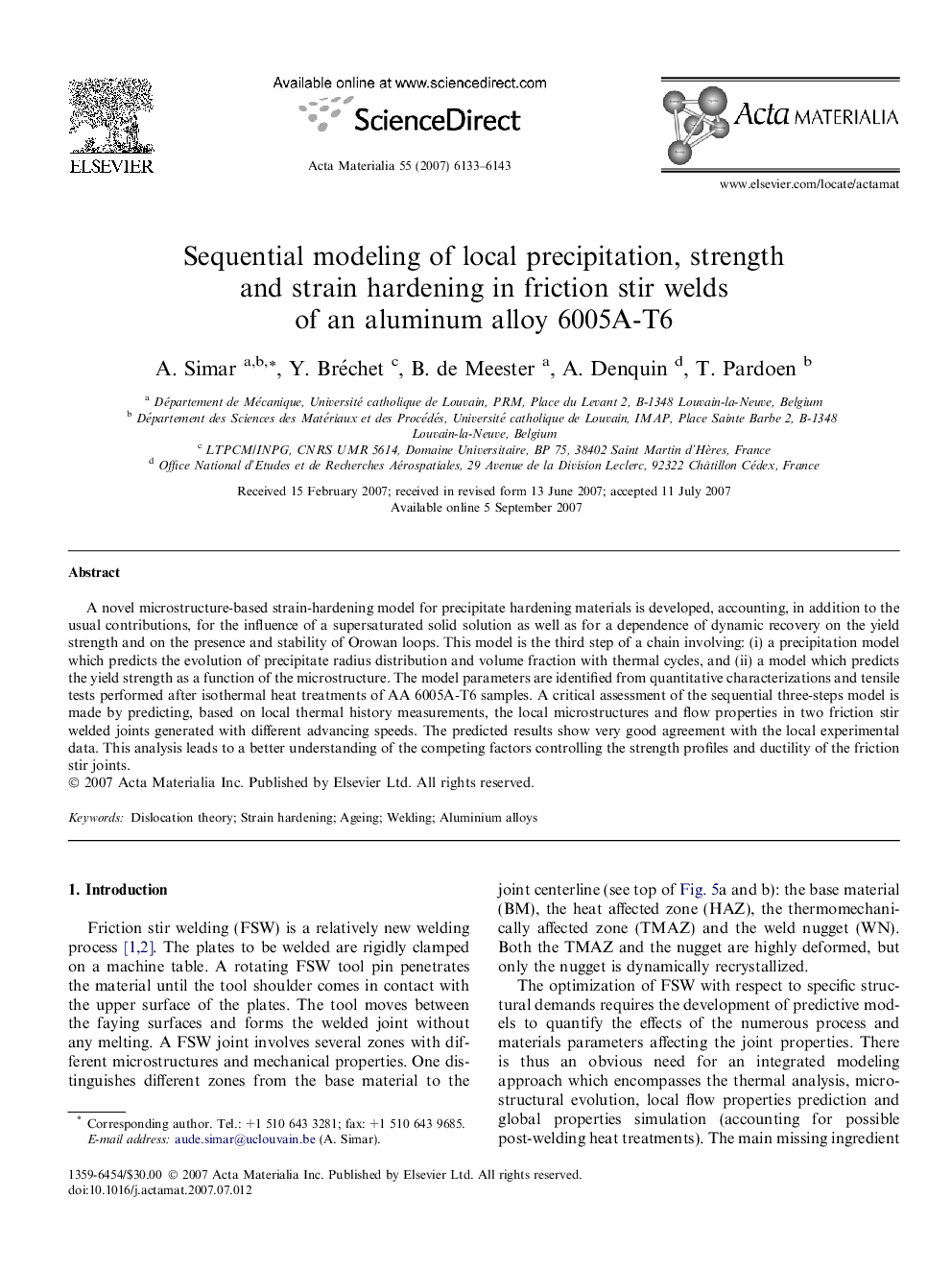| Article ID | Journal | Published Year | Pages | File Type |
|---|---|---|---|---|
| 1449420 | Acta Materialia | 2007 | 11 Pages |
A novel microstructure-based strain-hardening model for precipitate hardening materials is developed, accounting, in addition to the usual contributions, for the influence of a supersaturated solid solution as well as for a dependence of dynamic recovery on the yield strength and on the presence and stability of Orowan loops. This model is the third step of a chain involving: (i) a precipitation model which predicts the evolution of precipitate radius distribution and volume fraction with thermal cycles, and (ii) a model which predicts the yield strength as a function of the microstructure. The model parameters are identified from quantitative characterizations and tensile tests performed after isothermal heat treatments of AA 6005A-T6 samples. A critical assessment of the sequential three-steps model is made by predicting, based on local thermal history measurements, the local microstructures and flow properties in two friction stir welded joints generated with different advancing speeds. The predicted results show very good agreement with the local experimental data. This analysis leads to a better understanding of the competing factors controlling the strength profiles and ductility of the friction stir joints.
